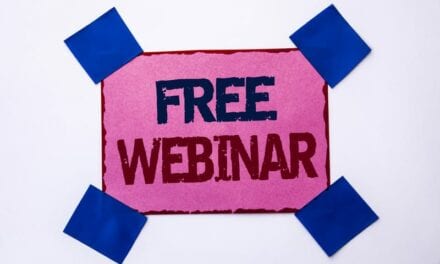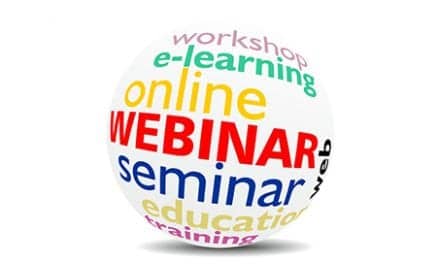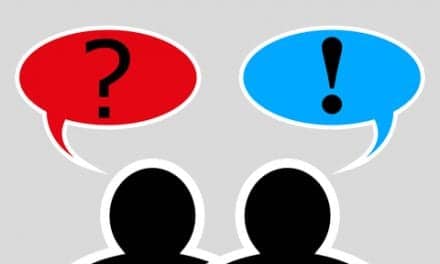Integrating modalities into therapy can foster much needed relief for patients affected by chronic low back pain.
by Misty Seidenburg, DPT, OCS, cert MDT
Back pain is the second most common symptom-related reason for clinician visits in the United States. Up to 84% of adults have low back pain at some time in their lives. The long-term outcome of low back pain is generally favorable, but given how common low back pain is, persistent symptoms affect millions of individuals.1 Of these individuals, 25% to 40% will seek healthcare, accounting for 3% to 5% of all primary care consultations. Most patients who are seen in primary care are diagnosed with “nonspecific low back pain,” which is pain that cannot be reliably attributed to a specific disease or pathology.2 Chronic low back pain (CLBP) is defined as persistent symptoms for greater than 3 months. These individuals account for approximately 5% of people with back pain disability, but for 75% of the costs associated with low back pain.2 Noninvasive intervention can play a significant role in reducing these costs.
Chronic low back pain is prevalent due to multiple risk factors. These include a prior history of back pain, mechanical stresses such as repetitive bending, poor posture, as well as psychosocial factors. These factors can lead to degeneration and displacement of the disc, deterioration of the facets in the spine, and other degenerative changes. These changes can lead to not only low back pain, but irritation of the nerves, causing radiculopathy.
To improve treatment of low back pain, there has been a shift toward categorizing individuals affected by this condition into various subgroups. There have been many classification systems developed to assist with management of low back pain, each with a goal to divide people into homogeneous subgroups to improve patient outcomes. While each of these schemes varies, the goal is to help direct treatment and return the individual quickly to full function. One of the most common classification systems is that of Robin McKenzie. He theorized that the disc is adaptable and that symptoms will respond to a directed set of movements to reduce pain termed directional preference. In a normal functioning spine, the disc allows for movement in the opposite direction of motion and provides shock absorption. In the case of too much movement in one direction, the nucleus of the disc can become displaced and will generate pain as it puts pressure on the outer annulus of the disc. This displacement most often occurs posteriorly and laterally, leading to low back pain and radicular symptoms commonly referred to as sciatica. Utilizing repeated movements in the direction opposite of the disc displacement will cause a phenomenon called centralization, abolishing the most distal symptoms and eventually the back pain itself.
Proper examination by a clinician is integral to place the patient into the correct classification to direct treatment. When a directional preference is determined, the individual can take control over their symptoms and assist in resolution of those symptoms. In some cases, patients can abolish their pain independently, but in others the therapist also will need to intervene with manual force progression including joint mobilization and stretching.
While some individuals respond quickly to manual therapy and repeated movements alone, others are slow to respond or do not follow a typical response. In a more chronic pain state, their symptoms can become more centralized and they will not respond to a predictable pattern of treatment. For these people, a progressive core strengthening program focusing on lumbar stabilization, endurance, and proper mechanics can provide the most benefit to control their symptoms during daily activities. Throughout these treatments, modalities are often incorporated to facilitate a quicker recovery.
There are a wide range of modalities that can serve many purposes including reducing inflammation, decreasing muscle spasm, and increasing local blood flow to improve the rate of tissue healing, and decreasing pain. While these modalities can be very effective in reducing symptoms in the clinic, modalities specific to CLBP should be used as an adjunctive tool for active rehabilitation with promotion to independent treatment, not just as a passive treatment as they have not been shown to have long-term positive outcomes when compared to active approaches. There are many different types of modalities available, only a few of which will be discussed here.
Hot/Cold Therapy
Heat and cryotherapy are the most commonly used modalities and are well utilized. In acute injuries, they are used in the widely known RICE protocol, but they also can be well utilized in the treatment of CLBP. These therapies are also a simple tool for the patient to use at home and manage their symptoms. Homemade rice packs can be warmed in a microwave to utilize for heat therapy, and a frozen bag of peas or mixture of alcohol and water frozen in a plastic bag that zips closed can be utilized for cold.
Moist hot packs can be used to decrease muscle spasms and improve relaxation prior to stretching. Once stretching occurs, there is less stiffness and increased mobility, allowing improved function. Heat also can be helpful to directly manage pain in more centralized pain states as it dilates the blood vessels, allowing improved oxygen flow and circulation to aid in healing. Contraindications to heat therapy include diminished sensation, circulatory issues, deep vein thrombosis, infections, cancer, and sensitivity to heat.
Cryotherapy is also an advantageous adjunctive modality. It too can be used to control pain by constricting blood vessels and thereby decreasing swelling. It also can numb injured tissue by slowing down the nerve impulse. A very useful form of cryotherapy is compression and cold therapy systems that not only provide a constant flow of cool ice water, but also compression to reduce inflammation. Contraindications to cryotherapy include cold sensitivity, rheumatoid arthritis, Raynaud’s phenomenon, and certain cardiac conditions.
Topical Analgesics
For temporary pain relief that can be applied in the clinic or at home, therapists may turn to a wide range of topical analgesics. These products have active ingredients such as capsaicin and menthol, are manufactured in the form of sprays, creams, or gels, and are typically easy to apply. Common uses include pain relief for symptoms associated with osteoarthritis and other chronic joint-related conditions.
TENS/H-wave
Electrical stimulation is one of the most common modalities utilized to help control CLBP. Two theorized mechanisms of action have been considered as to how electrical stimulation works. The first is causing the local release of neurotransmitters such as serotonin to block the pain signals in the brain known as the endogenous opioid theory of pain. The second method follows the gate control theory of pain. This is when analgesia occurs in the dorsal column of the spinal cord via inhibition of C-fiber nociception, reducing the signals traveling to the brain. It also has been shown that low frequency electrical stimulation increases microcirculation and endoneural blood flow, promoting healing. Contraindications to electrical stimulation include cancer, presence of a pacemaker, placement over open tissue, or protruding metal implants. There are many different types of electrical stimulation; the two discussed here include TENS, which is the most widely known, and a new type of technology termed H-wave.
TENS is a high frequency electrical stimulation that can be tolerated for long periods of time. It does, however, last for only a short period after removal. This type of stimulation operates via the gate control theory to stimulate surrounding peripheral nerves around the site of pain. TENS units are small portable units that can be worn throughout the day, allowing individuals with CLBP to be more active and complete activities they may not otherwise be able to do.
H-wave is a new type of electrical stimulation that emulates the H waveform found in nerve signals instead of attempting to modulate these pain signals. It can be adapted for ultra-low frequency stimulation to improve joint inflammation or high frequency for pain relief. In a meta-analysis review of H-wave, it was shown to consistently reduce pain ratings, decrease the intake of pain medication with chronic and neuropathic pain, and increase function.3 This type of electrical stimulation also has been shown to have a longer lasting effect after its removal that appears to increase with continued use.
Iontophoresis
Iontophoresis is another modality used to treat pain, but one that is not always considered for CLBP. This is a means of administering a medication transdermally using a low, direct electrical current to drive it to the involved tissues. Frequently, it is used to administer anti-inflammatory medications to local tissues. A secondary mechanism for iontophoresis is the electrical current itself that can immediately reduce symptoms by blocking afferent pain receptors. An advantage of iontophoresis is its direct effect on tissue that reduces the systemic risk of infection and side effects compared to injections. There have been recent developments in iontophoresis such as long wear patches that allow permeation of tissue to a greater depth and allow the patient to wear it throughout their day.
Traction
Mechanical lumbar traction operates under the theory that separation of the lumbar vertebrae will decrease impingement of the spinal nerves as well as decrease intradiscal pressure. Newer mechanical traction units apply traction to the spine via a computer-driven table, which controls the level of disc decompression with an average treatment time of 30 minutes. A 2009 study developed a clinical prediction rule showing the most effective use of traction is in those individuals aged less than 30 years with non-manual labor jobs, low fear avoidance beliefs, and no neurologic deficits.4 If an individual finds a positive response from traction, home units can be given for more regular use.
When treating CLBP, there are many options for consideration. Despite the lack of concrete evidence supporting the use of modalities, many individuals report relief of symptoms utilizing modalities, and can be more responsive to an active approach to their treatment. These interventions are viable options when directing appropriate treatment and to enhance recovery. Individuals living with CLBP should be confident they do not have to live with their pain. There are physical therapists specially trained to look at the spine from a mechanical viewpoint and can change the functional limitations associated with back pain. RM
Misty Seidenburg, DPT, OCS, cert MDT, is the center manager of the Dillsburg Drayer Physical Therapy Institute clinic. She is a graduate of the DPTI Orthopedic Residency and Spine Fellowship and board-certified in orthopedics. Her areas of expertise include orthopedic manual physical therapy. For more information, contact [email protected].





